Understanding Bankruptcy: A Comprehensive Overview
by Luke Homen
Debt is a problem that millions of Americans are all too familiar with. For some, bad debt becomes an insurmountable issue that affects every single decision they make. If you’re at the point where your mounting debt is constantly in the back of your mind and you are unable to make your payments, it may be time to consider bankruptcy. Consulting with an experienced bankruptcy lawyer can provide essential guidance and legal expertise as you navigate the complexities of bankruptcy and work toward achieving financial relief.
Definition and Purpose of Bankruptcy
Bankruptcy is a legal process that allows you to declare that you are insolvent, which essentially means that you are unable to pay the debts you owe. This is a highly regulated legal process that requires extensive paperwork, documentation, and verification of the information you provide. Depending on your circumstances, bankruptcy may mean either discharging your debts entirely or restructuring them in a more affordable manner. Seeking guidance from an experienced Oklahoma bankruptcy attorney can help you navigate this complex process with confidence and ensure your rights are protected throughout.
Types of Bankruptcy
There are several types of bankruptcy, each of which fills different needs for consumers:
- Chapter 7 Bankruptcy: Those who file Chapter 7 liquidate their non-exempt assets in order to pay back creditors in part. Any debts that are not paid by their liquidated assets are discharged, although there are some types of debt that are not discharged in bankruptcy. This is only available for income-eligible individuals.
- Chapter 13 Bankruptcy: Chapter 13 bankruptcy is a viable option for those with regular income who wish to reorganize their debts and keep their assets. Instead of just discharging debt, Chapter 13 restructures it into a payment plan lasting three to five years.
- Chapter 11 Bankruptcy: Although Chapter 11 is more commonly used for businesses than for individuals, it is still available to some individual filers. It is similar to Chapter 13 bankruptcy but does not have a limit on the length of the payment plan, so filers may extend their debt payments over a much longer time period. Chapter 11 can be extremely expensive, so it’s generally only used by large corporations and the super wealthy.
Bankruptcy Process

Once you file, the Automatic Stay goes into effect and creditors can no longer attempt to collect from you. The Automatic Stay protects you instantly from attempts to garnish, sue, harass, mail, email, text, direct message, or in any way collect a debt. It is very powerful.
During the 341 meeting, which is also known as the Meeting of Creditors, debtors meet with the trustee to go over the bankruptcy petition, answer approximately ten basic financial questions, and testify under oath that all of the submitted paperwork is true and correct. Historically, this process occurred in person at a federal courthouse. Now, it takes place by phone and Zoom, and you don’t even need to leave home!
Bankruptcy Discharge and Dismissal
Once you have successfully completed the bankruptcy process, you may receive a discharge. If you file for Chapter 7 bankruptcy, the discharge comes at the end of the filing process, which generally takes a matter of months. If you file for Chapter 13 bankruptcy, any remaining unsecured debt is discharged upon completion of your three-to-five year payment plan. Note, though, that some debts are not discharged in bankruptcy. They include spousal support, child support, and some tax debt. Student loans are not automatically discharged, but may be included in the discharge through a special process.
Another potential outcome of a bankruptcy filing is dismissal. If your case is dismissed, you are still legally responsible for your debt. This is often the outcome if someone hides assets or income sources, is non-compliant with the trustee’s requirements and requests, or does not qualify for bankruptcy. It is extremely important to hire an experienced bankruptcy attorney to guide you through the process so you don’t risk dismissal!
Impact of Bankruptcy
Most importantly, you will be free of your bad debts! This means an end to harassing phone calls, letters, and debt collection. You won’t need to worry about being served with a lawsuit or how you will make ends meet if a creditor garnishes you. That will all be gone!
Some clients will experience a drop in their credit score immediately after filing for bankruptcy. The actual change depends on how significant your debt was before, if you were behind on payments, and if you had accounts in collections. Building and rebuilding your credit after you file bankruptcy (or even if you don’t!) is a very important part of modern life. That’s why at Convenient Bankruptcy, we provide every single client with a free-to-the-client credit building program once they receive their discharge!
Many people worry about their ability to secure new lines of credit after bankruptcy. While it is definitely different than it is for someone with a perfect debt history, it isn’t impossible. In fact, when you file a Chapter 7 Bankruptcy, you are legally able to incur new debts the very next day!
You have to be careful after you file bankruptcy because you can’t immediately file another case if a creditor takes advantage of you. If fact, there are some creditors who specifically look for people who file bankruptcy in order to offer them credit. But if you’re careful, and you take the advice of a good attorney, you can use this to your advantage!
Bankruptcy Alternatives
There are other options to explore if you aren’t ready to take the plunge and file for bankruptcy. Debt consolidation combines your debts into one single monthly payment with a lower interest rate. This is a specific type of loan, and if your credit score isn’t high enough, you won’t be approved.
If you are behind on your payments, you may also be able to settle your debts directly with the creditors. This may involve paying less than what you owe, as some creditors would rather get something than nothing.
Some people also consider a debt settlement program, where you hire a company to collect your money and negotiate settlements with your creditors. Unlike bankruptcy, debt consolidation doesn’t include any court protection. Any one creditor can choose not to participate, and file a lawsuit against you instead. These plans are almost always substantially more expensive than filing for bankruptcy.
Wondering if bankruptcy is the right choice for you and your financial future? Our team of experienced bankruptcy lawyers at Convenient Bankruptcy is here to help you explore your options. We handle bankruptcy filings throughout Oklahoma including Tulsa, Edmond, Norman and Lawton. We are just a phone call away – call 405-296-0069 to get in touch with our team or contact us online to set up a consultation.

Attorney Luke Homen is the President of Convenient Bankruptcy. He placed great value on helping individuals and families solve their financial challenges and achieve real financial freedom. His goal is to find a customized solution that fits each client’s unique situation. Luke has been practicing law since 2008, and was voted “Best Bankruptcy Attorney in Oklahoma” by The Oklahoman in the Reader’s Choice Awards.
